On October 28, 1942, construction was completed on the 1,700 mile Alaska Highway.
In the 1920s, people began proposing a highway from the lower 48 states, through Canada, to Alaska. The Canadian government refused to offer funds for its construction because it would have benefited only the small population of the country’s Yukon Territory. Support increased in both Canada and the US toward the end of the decade. Unfortunately, the Great Depression hit and there was no money for such a program.
When war came to the Pacific Ocean, US President Franklin Roosevelt once again proposed the highway to Canada as a defense against Japanese aggression on North America. Full support came when the Japanese attacked the American naval base at Pearl Harbor, then captured two of the Aleutian Islands off Alaska’s coast. The Canadians agreed to allow construction on the condition the portion going through that country would be turned over six months after the war.
Construction began in March 1942 after the equipment and workers had traveled by train to Dawson Creek, British Columbia. After the spring thaw, crews began working from both ends, planning to meet in the middle. The US Army Corps of Engineers was assigned more than 10,000 men to build the road. Completing the road in less than nine months is considered one of the greatest feats in US engineering history. The road was officially completed on October 28, 1942.
The highway was dedicated on November 20, 1942, and went into use shortly after. The Alaska-Canadian Military Highway, later the Alcan Highway and eventually just the Alaska Highway, became an important supply route for the bases and airfields in the US territory of Alaska during the war.
When the war ended, the Canadian part of the road was turned over to that country as agreed. It became part of the Northwest Highway System. Because the highway was built specifically for the military, some portions were not acceptable for civilian travel. Over time, winding sections and mountain switchbacks were rerouted and the path was changed to bypass residential areas. In the more than 75 years since construction was initially completed on the highway, it has been shortened by over 300 miles. Modern measurements put its length at 1,387 miles.
Early on, mileposts were placed along the extensive highway. Because of the changes made in the route, many of the markers are not accurate, but because of tradition, they remain. In fact, one British Columbia town is named for its milepost location. Wonowon, pronounced “one-oh-one,” is at mile 101 on the highway.

Improvements continue on the Alaska Highway making it easier for residents and visitors alike to travel through this beautiful but frigid state. Without this roadway, Alaska may not have grown to be the productive state it is today.
Click here to see what else happened on This Day in History.

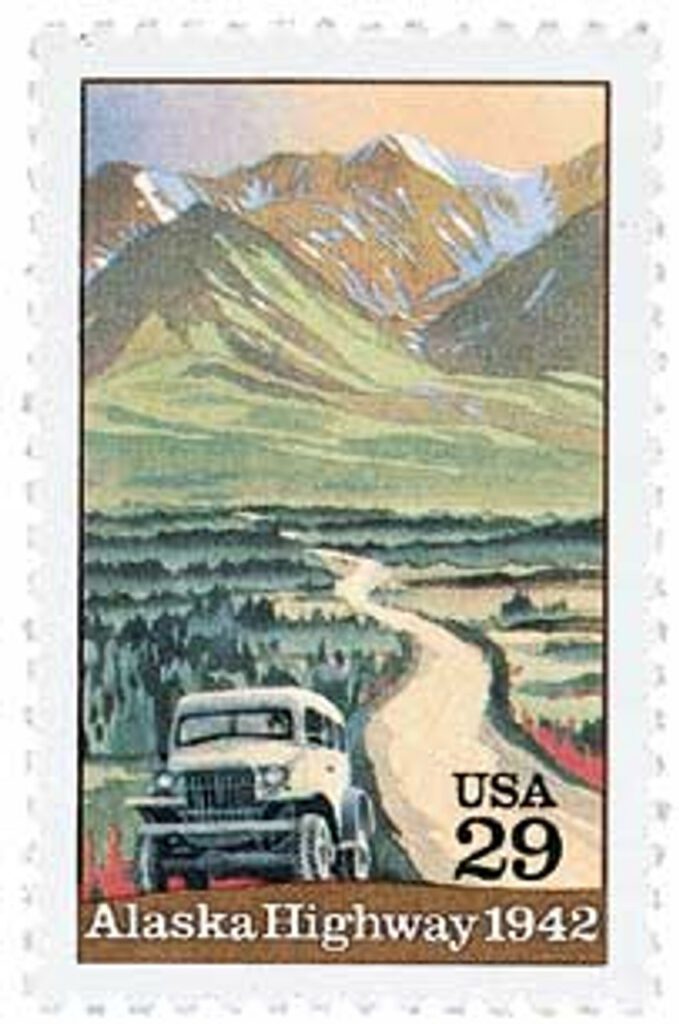
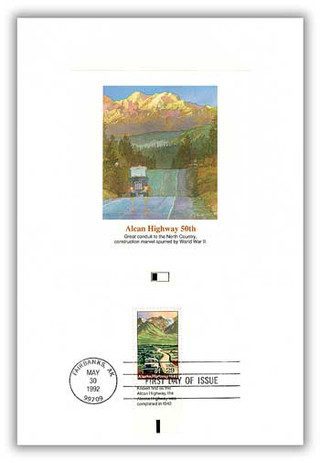
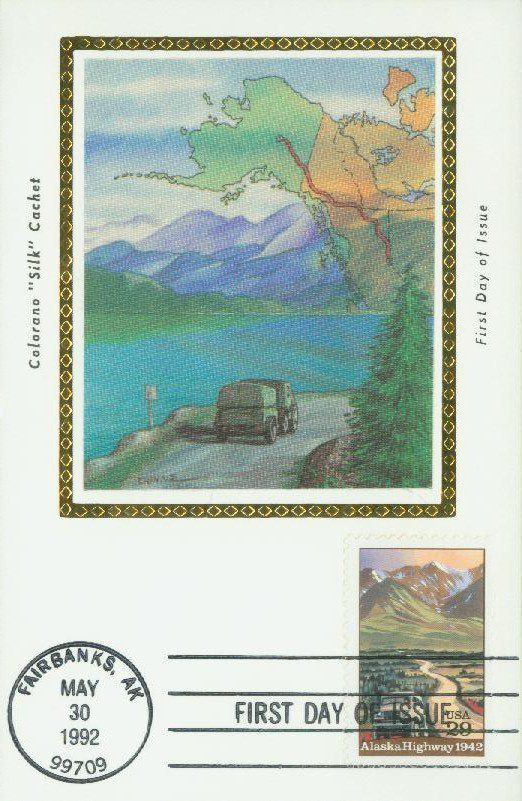
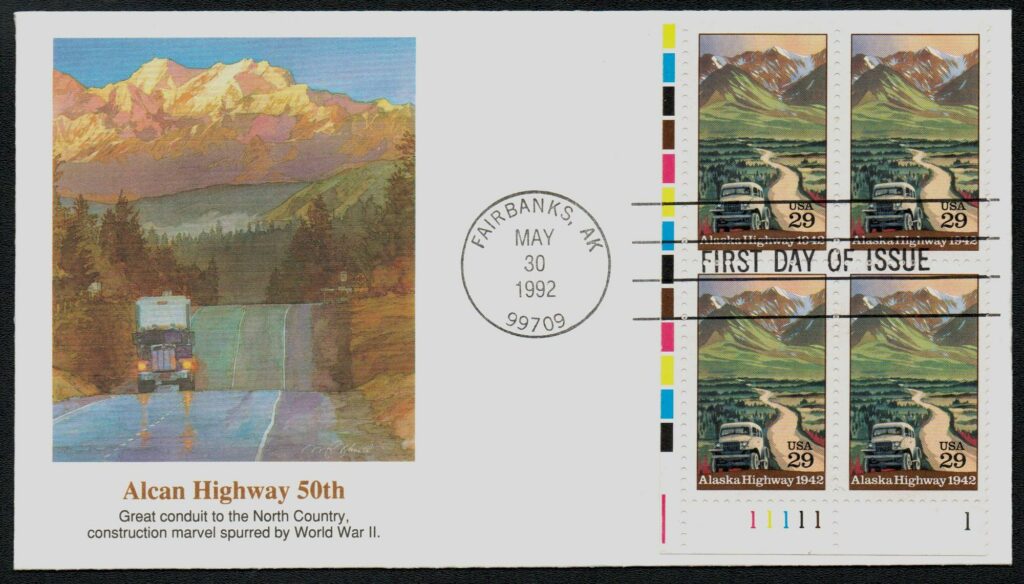
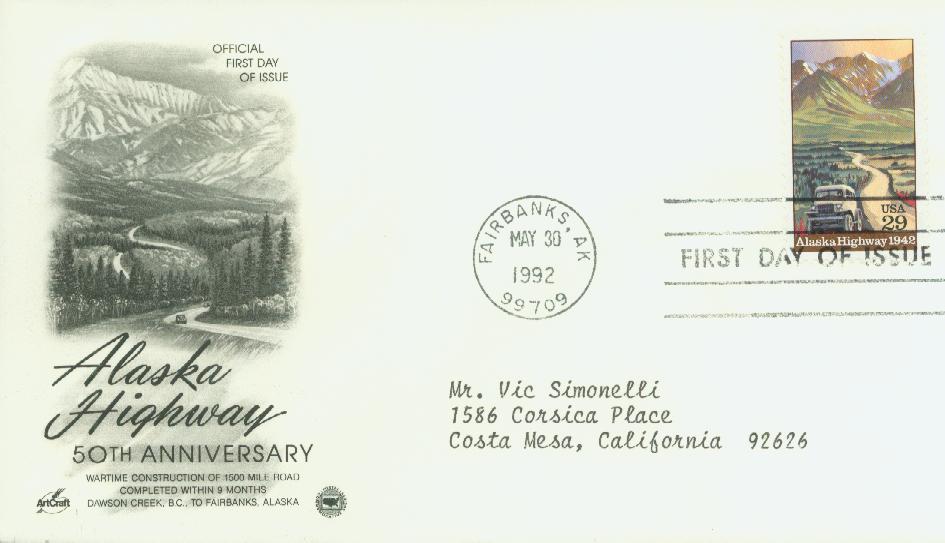
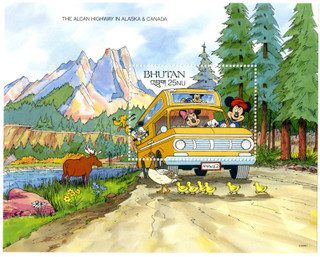
I drove that route in 1978, when portions were still dirt and gravel. One section was being “smoothed over” after a heavy rainfall, which I thought was great. There had been many potholes (Alaskan in size!) and I thought it would be a great joy to drive over the smoothed road. Then I discovered it wasn’t truly smoothed – the treatment it received served only to hide the heretofore visible holes; lesson jarringly received!
I liked your entry, Clyde! Very funny.
My uncle worked for theU.S. government in Alaska on the highway in 1942-43.
I turned my brand new car over in 1964/. My father was admitted to the hospital in Fort Nelson BC the radio was playing “Way Down in Columbus GA. My hometown. I don’t mind admitting I cried. Having turned my car over, my Dad in the hospital and being over 3500 miles from home.